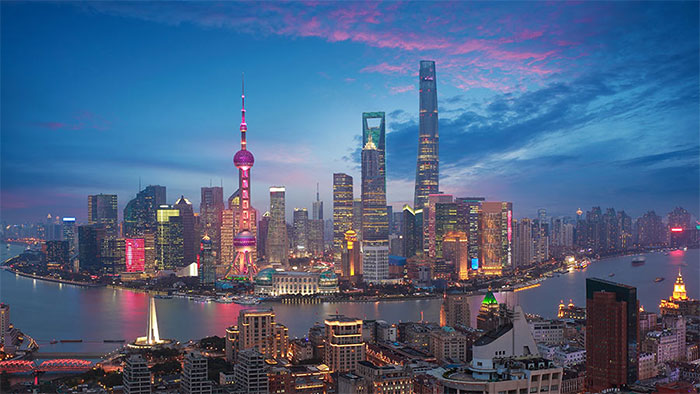Sea levels along the coast of China are rising faster than the global average, with some areas experiencing an increase of nearly 5mm per year, according to satellite data and tide gauges.
Global warming is causing sea levels to rise worldwide, with the current average rate at 3.6mm per year (compared to 1.4mm per year for most of the 20th century).

Shanghai is the city most affected by rising sea levels – (Photo: CHINA BRIEFING)
Ocean currents connect the seas, but the rate of sea level rise is not evenly distributed. China’s coastal waters are experiencing significantly higher rates of sea level rise, with an average increase along the Chinese coast currently at 3.9mm per year. Some areas are seeing increases close to 5mm per year.
According to the Guardian, a new study from China has investigated the causes of this localized increase and identified the communities most vulnerable to its effects.
In an article published in the journal Geophysical Research: Oceans, Dr. Dongxu Zhou from the Ministry of Natural Resources in Qingdao and colleagues noted that possible causes include faster warming in China’s seas and lower air pressure in the region, leading to large volumes of freshwater flowing into the China Sea. At the same time, this creates unusual wind patterns and coastal currents.
Over 40% of China’s population and 60% of its industry are located in low-lying coastal areas, making it one of the most vulnerable regions in the world to rising sea levels.
Using data on global sea levels from Climate Central, a U.S.-based nonprofit organization, the Financial Times analyzed that trillions of dollars in economic activity along China’s eastern coast are being affected by rising oceans due to climate change this century.
The economic power of Shanghai, China’s leading financial center with an estimated GDP of $973.7 billion in 2019, is situated between the Yangtze River estuary and Hangzhou Bay, making it particularly susceptible to rising sea levels.
Two cities within 100km west of Shanghai, including Suzhou and Jiaxing, rank second and third among 34 cities affected by rising sea levels. In 2019, Suzhou had a GDP of $330.4 billion, while Jiaxing had a GDP of $128.8 billion.
In addition to densely populated urban centers, other critical segments of the industrial supply chain and China’s high-tech research and development hubs also face similar risks.


















































